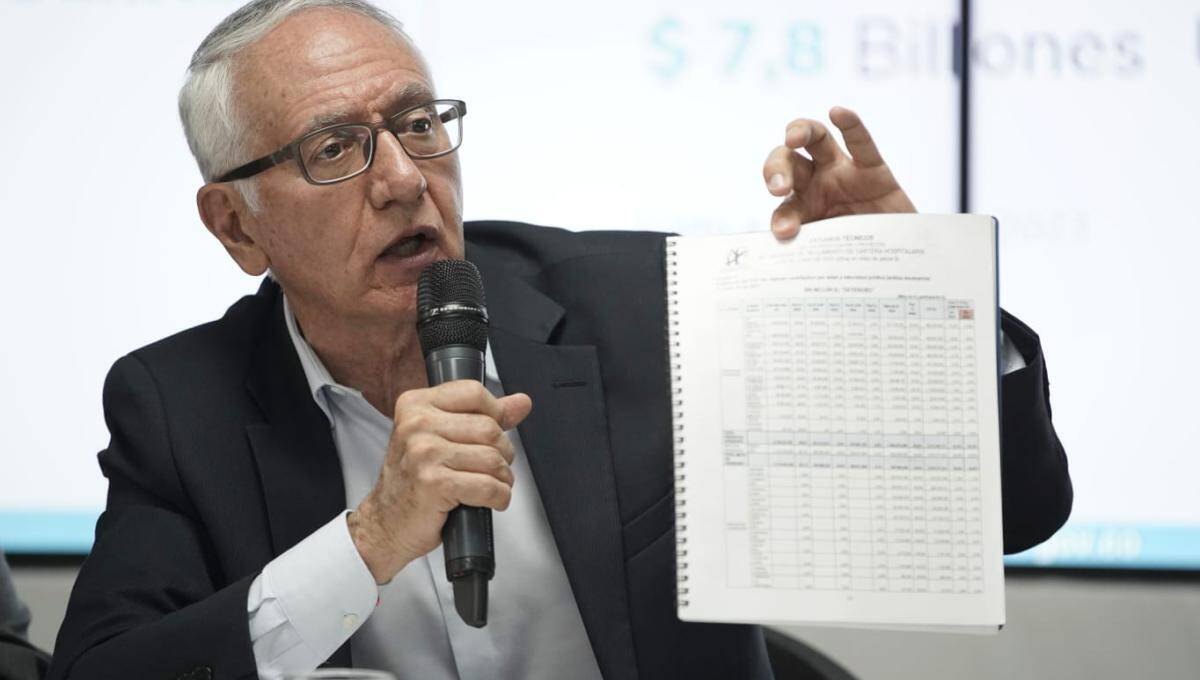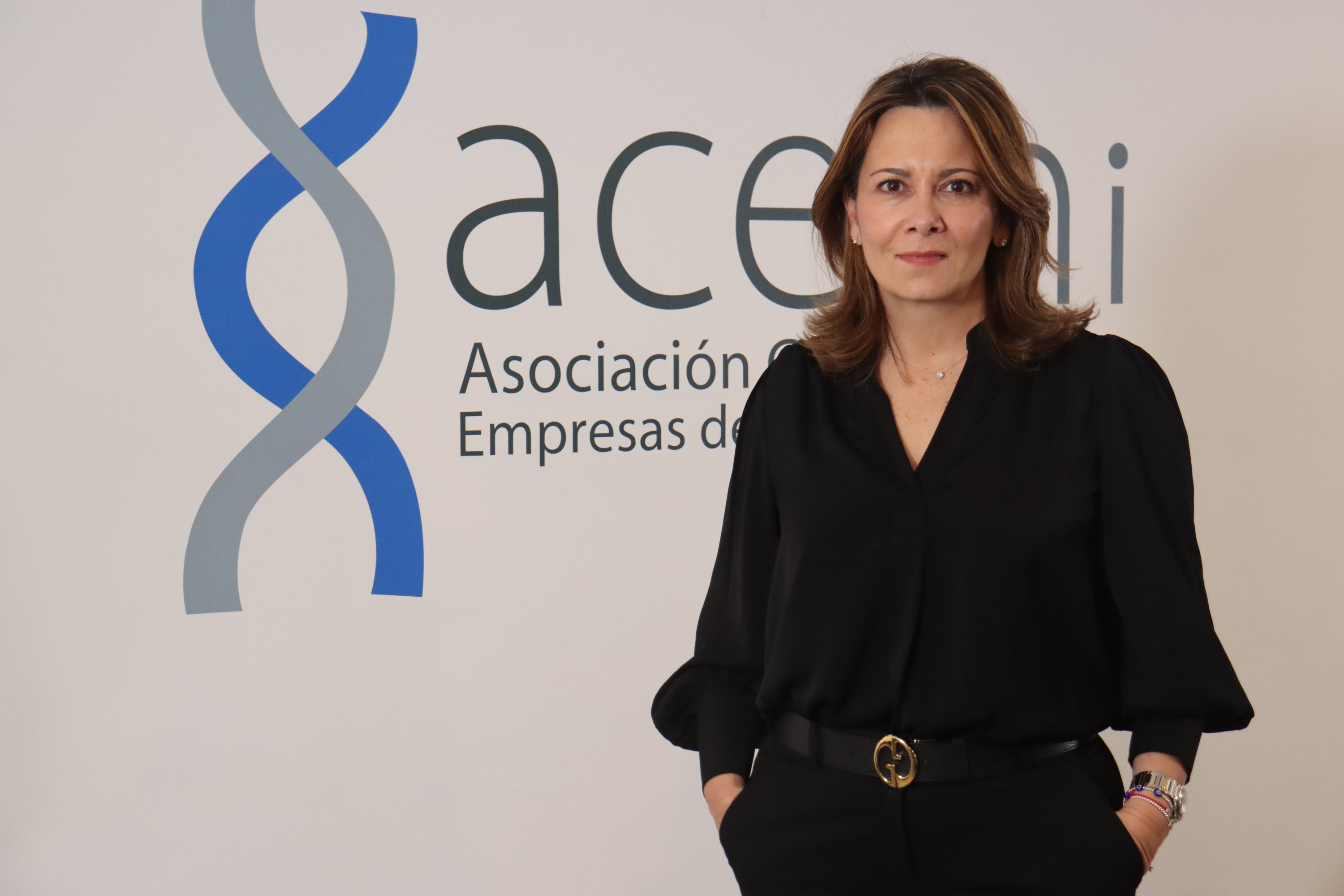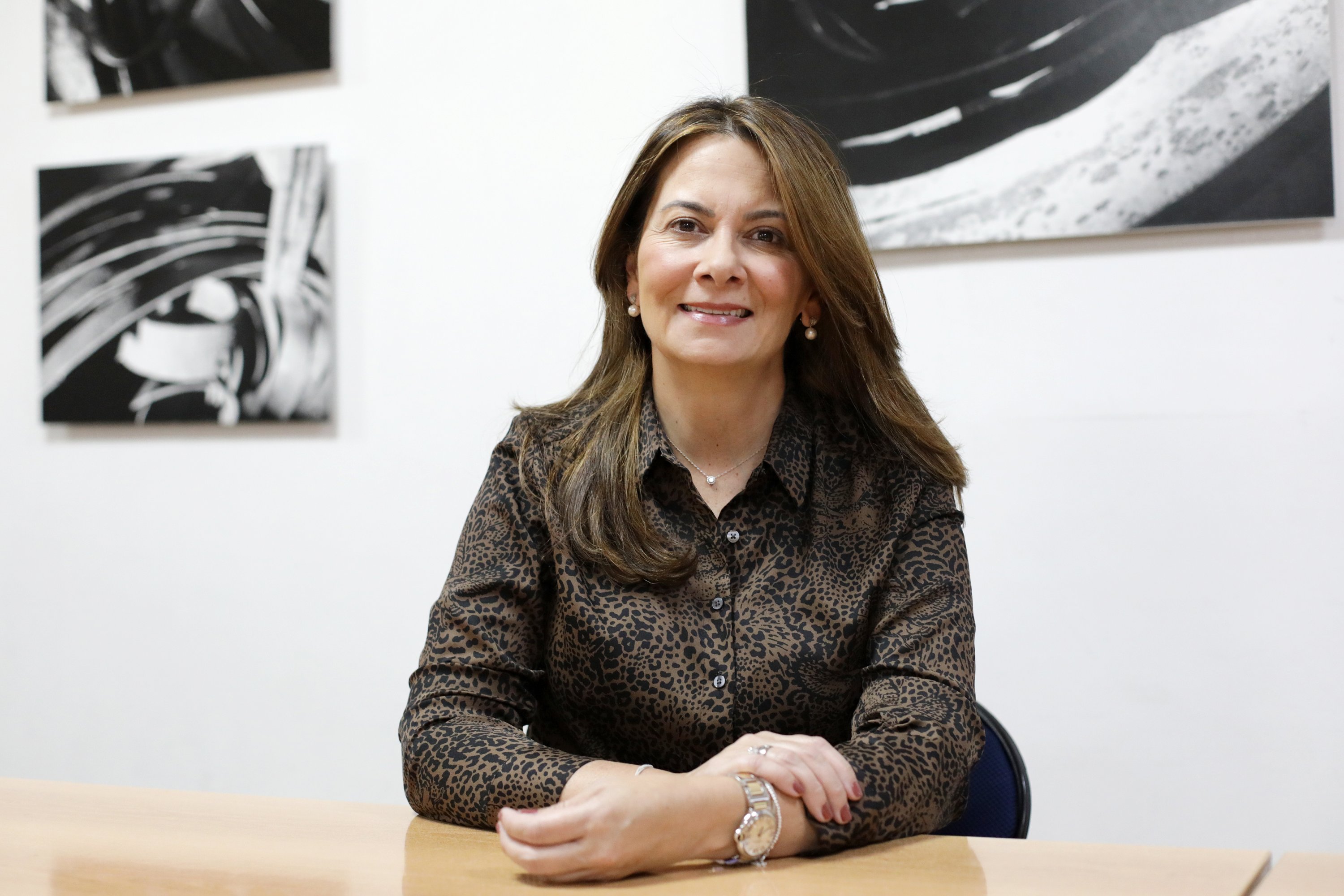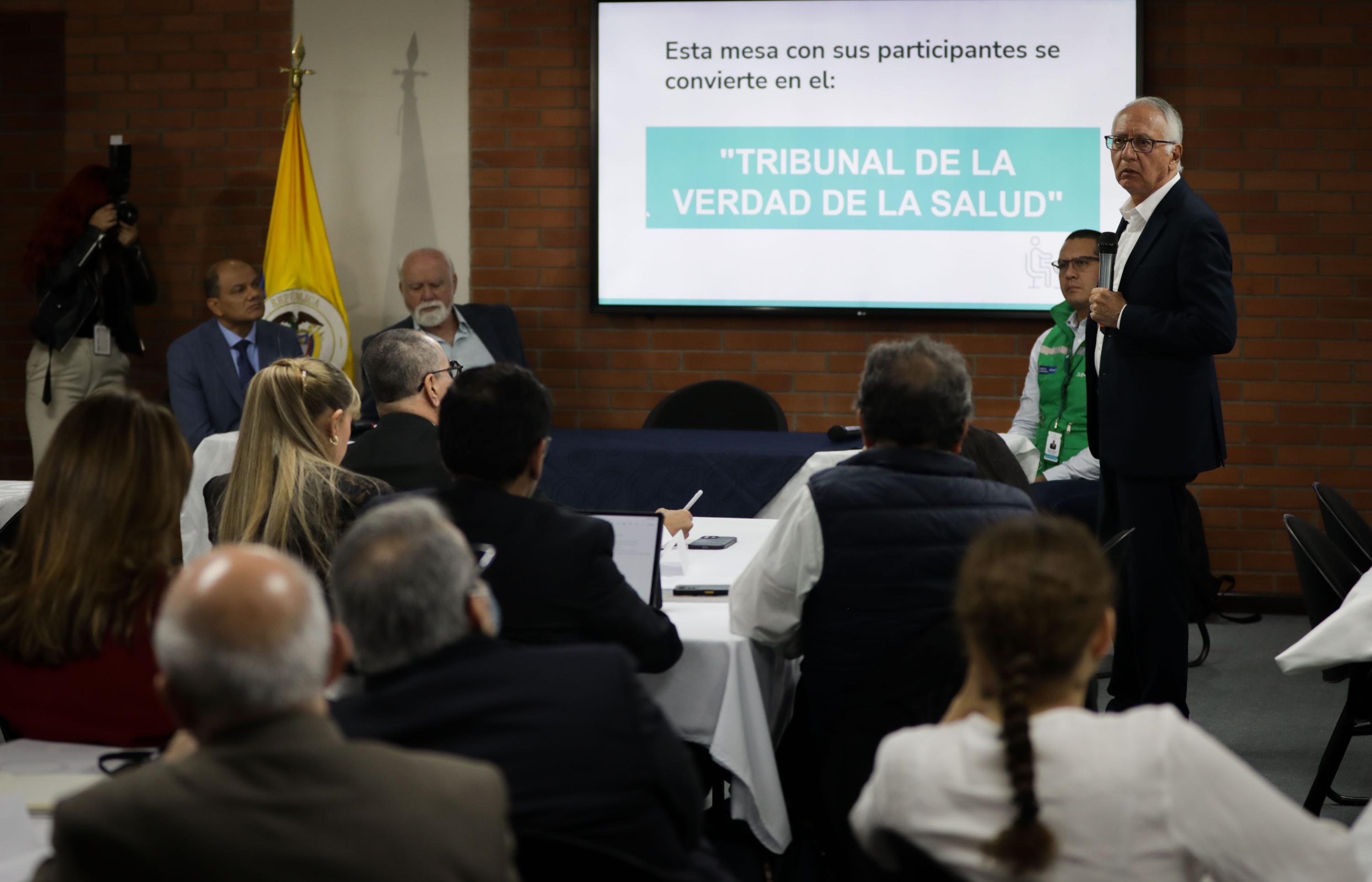'If the Ministry of Health's decrees violate the Constitution and the law, the only way forward is to sue them and have them overturned.'

A few days ago, the Ministry of Health published two draft decrees for comment that seek to make changes to the health system, given the complex future of the health reform bill in Congress.
With these regulations, the government would seek to make changes to the allocation and management of the UPC and the role of the EPS in the system by implementing a "Preventive, Predictive, and Resolute Health Model." Basically, it would implement by decree some of the changes included in the reform text.

The Ministry of Health submitted two decrees for comment a few days ago. Photo:
However, for Acemi, the EPS union, several of the articles in this latest regulatory proposal would violate the law and go against the Constitution and the regulatory framework of the health system. According to Acemi president Ana María Vesga, they will present several observations to the Ministry of Health on May 10 due to the legal irregularities in the text.
In an interview with EL TIEMPO, the head of the EPS union stated that "if the Ministry of Health decrees violate the Constitution and the law," the only way forward is to sue them and overturn them. According to her, while it's true that each government establishes its own healthcare model, in the case of the current one, what is being proposed is openly counter-regulatory.
Vesga also highlighted that the technical roundtables on the UPC, ordered by the Constitutional Court, while they provided the necessary information demonstrating that not enough resources are being allocated to the system today, and that this is what is causing the crisis, in his opinion there were several factors that affected the discussion, such as the lack of information from the intervened EPSs (which cover 60 percent of users) or the methodology defined by the Ministry of Health to present the data.

Ana María Vesga, executive president of Acemi. Photo: Acemi
Today, 80 percent of the resources in most EPSs are transferred through the direct transfer mechanism. As we have always warned, this mechanism means that funds do not reach the EPSs and are transferred directly by Adres, but it does not resolve the financial difficulties the system faces due to insufficient resources.
However, a problem has also arisen in the implementation of this direct transfer, which is now expected to reach 90 percent: the delay in billing by clinics and hospitals, caused by the implementation of electronic invoicing and the Individual Records of Health Service Provision (RIPS). This, in turn, makes it difficult for EPSs to submit payments for direct transfer by Adres. It is necessary to resolve the difficulties in the operating model between the Ministry and providers to ensure the smooth flow of resources.
How does this impact users? Absolutely. Difficulties in the flow of resources to the sector translate into barriers for users. We're seeing this in the area of medicines and, of course, in the other services the population demands.

Ana María Vesga, CEO of Acemi. Photo: César Melgarejo. EL TIEMPO
Obviously, there are insufficient resources, and that's where we have to talk about accidents. The Superintendency of Health recognizes this in its 2024 calculations: healthcare spending exceeds UPC revenue by nearly 9 percent. This backlog, which has been accumulating mainly after the pandemic and which we have estimated at more than 20 trillion pesos, is money owed to the system and is represented in the portfolio of clinics, hospitals, and providers, and which has eroded the assets of the EPSs. For this same reason, the technical reserves have not been met; there isn't enough money.
What do you think about the Ministry of Health's draft decree proposing a "Preventive, Predictive, and Resolute Health Model"? It must be said that every government has designed a healthcare model for the country. It's, in a sense, the embodiment of their own vision for the system, which arrives every four years. That's why, and we said it when the healthcare reform debate began: this government could have implemented many of the changes to the current model through decrees.
Now, that model or system design must comply with the law. In the case of the decree that is under public consultation this week, we are warning that there are several provisions that contravene health legislation: the powers of the EPSs and territorial planning cannot be modified by decree, nor can citizen participation bodies be created by decree, nor can the Health Superintendency be granted powers that exceed what it is granted by law.
We essentially see an excess of regulatory authority in the Ministry's proposal. In that sense, we will participate in the public consultation and hope that the Ministry will prudently address these observations, which in some cases are considered unconstitutional and in others illegal.
It would be critical for the system, in a time of crisis like the one it is experiencing, to also establish a model and make changes that would later have to be reversed, as happened with the emergency decrees in La Guajira.
What impact could this decree have on the different actors in the sector? Many. Mainly for users. The EPSs are relieved of their current legal duties: establishing the network and managing users through it.
According to the draft, the Emergency and Urgency Regulatory Centers (CRUEs) would be responsible for managing and ensuring patient care. Do the CRUEs have the administrative management capacity to handle the number of patients assigned to them? The role of the CRUE in the proposed healthcare model makes it the "control tower" of the system. What several EPSs in the same territory currently do to organize patient flow through the network will now be done by the CRUE. These capabilities must be developed, but before that: this is a role assigned to the EPSs under current legislation.
As the decrees are drafted, wouldn't it be very likely that they will be challenged and overturned? Of course. If the decrees contravene the Constitution and the law, that's the way to go.
How have you seen the progress of the UPC sufficiency tables ordered by the Constitutional Court? The schedule was met last week with the final roundtable. We made many observations about the way the roundtables were conducted: the composition and participation in the roundtables, as well as the methodology used. It was impossible to conduct an in-depth technical exercise using the method chosen by the Ministry. At Acemi, we collected and submitted information from our EPSs and analyses on frequencies, severity, accident rates, the effect of inclusions in the PBS, and the technical difficulties in adjusting the UPC.
We see two major problems: there is no proper standardization of information in either the report or the analysis; in other words, pears are compared to guavas. This affects the data and also creates discretionary power. Information is being eliminated from the system without any substantiation, and obviously, each record eliminated is an expense that is eliminated from the calculation. This explains the underestimation of the UPC in recent years.
The other major and serious problem is that there is no information on the EPSs that have been intervened, and they represent more than 60 percent of the population. We don't see how an accurate calculation can be made given this shortcoming.

Health Minister Guillermo Alfonso Jaramillo at the opening of the UPC working group. Photo: Mauricio Moreno
The Ministry has enormous responsibility for managing the system's information. It standardizes reporting, supports agents, compares information, and seeks continuous improvement in this process. The calculation of the UPC is the most important decision for the system's financing.
It's important to remember that the information provided by the EPSs is the information they receive from clinics and hospitals. If this report isn't correct, if it has inconsistencies, it affects its quality. This is a shared responsibility. However, what we have observed is that the Ministry claims that the EPSs either don't provide information or provide incorrect information, and the consequence is that they penalize the system and users with underestimated UPCs.
What the Ministry, as responsible for the process, should do is call all the stakeholders responsible for the report: EPS, providers, and suppliers, and compare and provide feedback, and I repeat: guide the improvement of the process. That is exercising leadership. We believe that with the information we provided at the meetings, the Ministry has sufficient elements to review the way it performed the calculations. The system needs more resources, regardless of the political debate or the vision of the system.
Environment and Health Journalist
eltiempo





%3Aformat(jpg)%3Aquality(99)%3Awatermark(f.elconfidencial.com%2Ffile%2Fa73%2Ff85%2Fd17%2Fa73f85d17f0b2300eddff0d114d4ab10.png%2C0%2C275%2C1)%2Ff.elconfidencial.com%2Foriginal%2Fc64%2F8a1%2Fbf2%2Fc648a1bf28a70b6a8b636d6c7d80a034.jpg&w=3840&q=100)